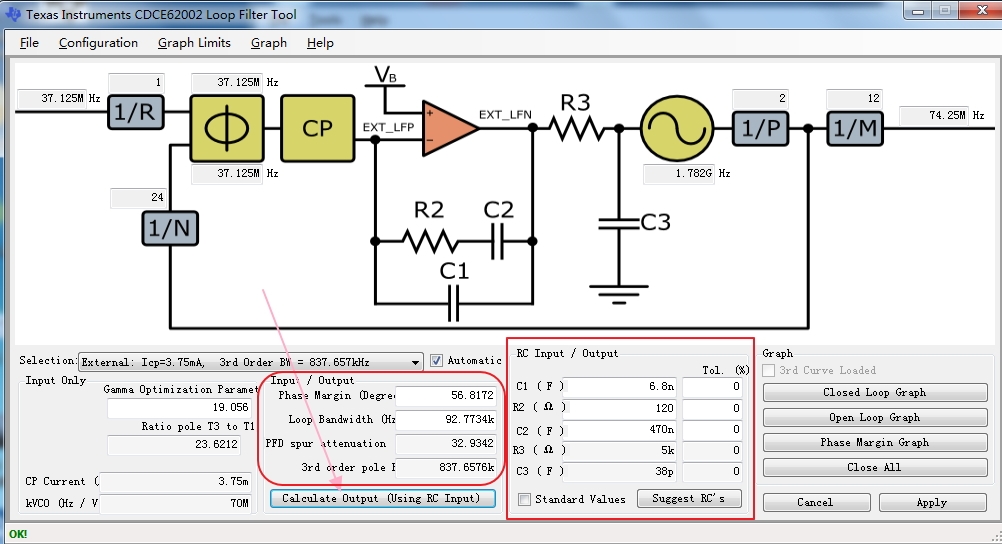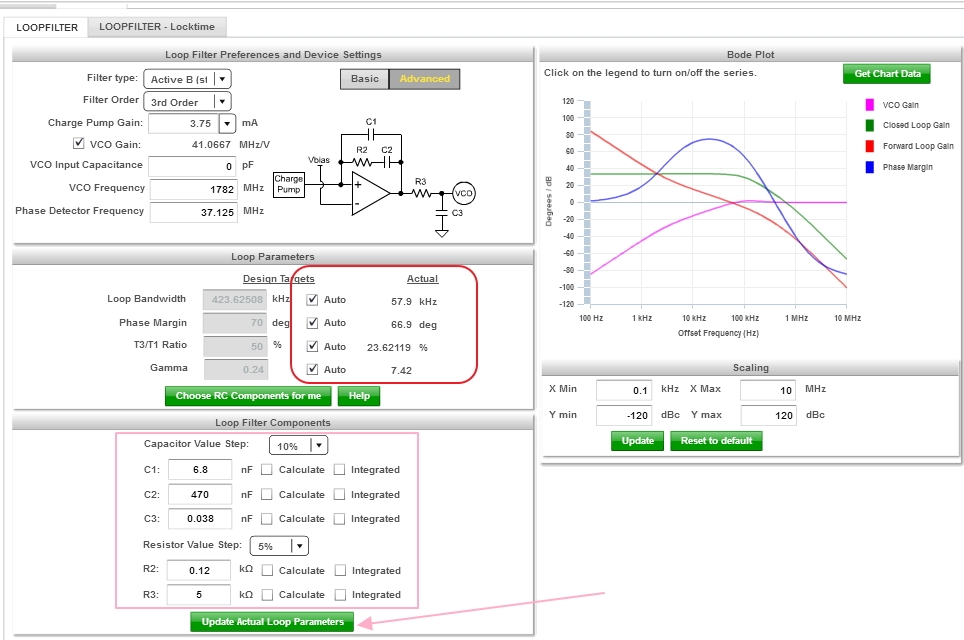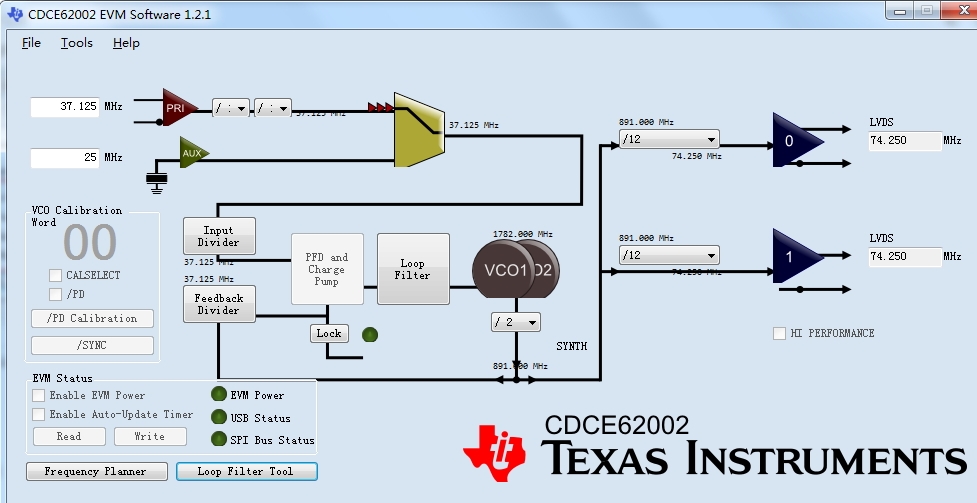Other Parts Discussed in Thread: CDCE62005
Tool/software: WEBENCH® Design Tools
Dear Team:
The part is CDCE62002,the input frequency is 37.125MHz(LVCMOS),the output frequency is 74.25MHz(LVDS);
Designing the loop filter,Using the same RC filled into Loop filter Tool and WEBENCH Designer,but the different phase margin、loop bandwidth output,which is the best?
thanks




